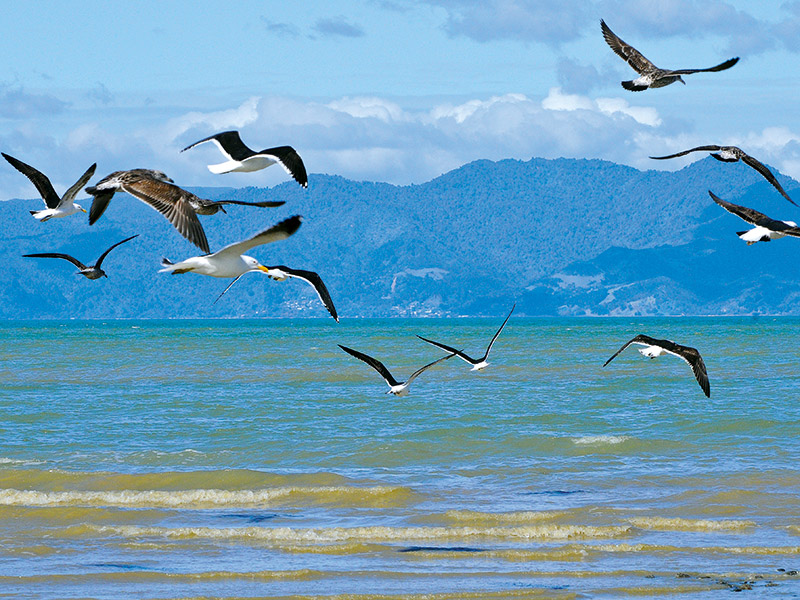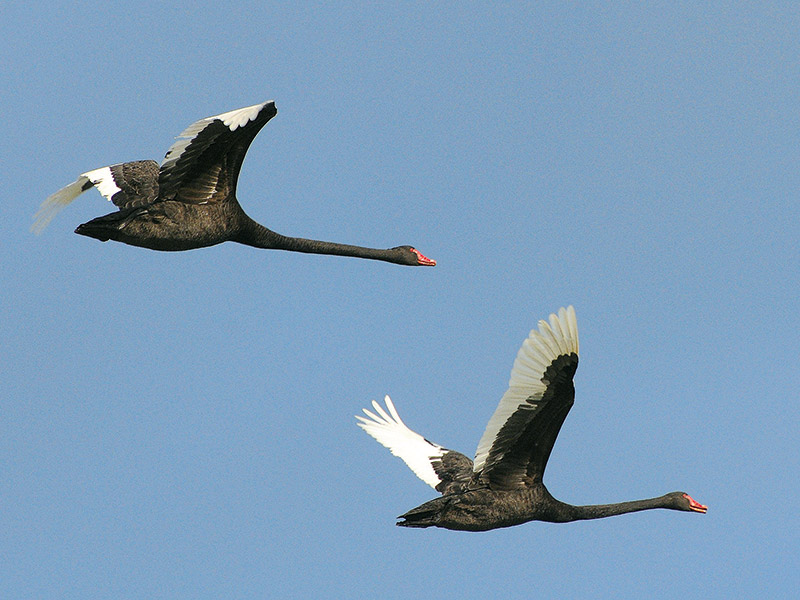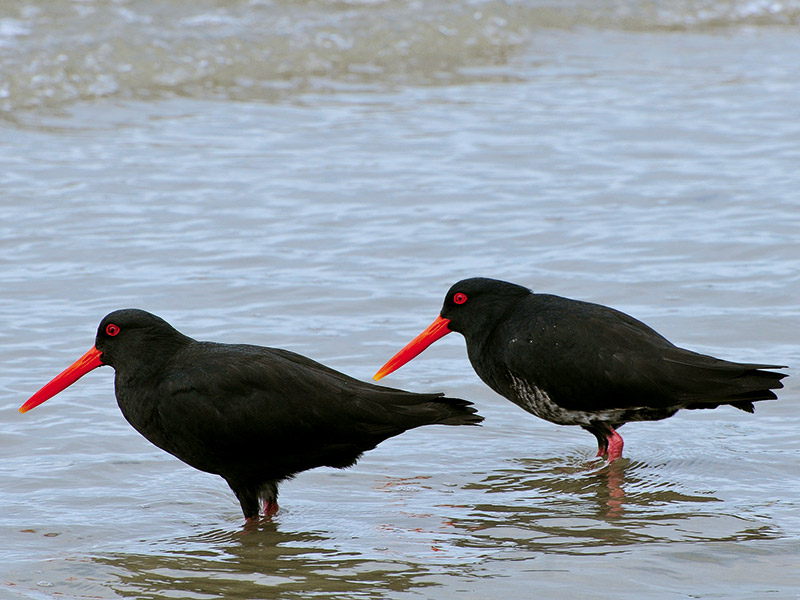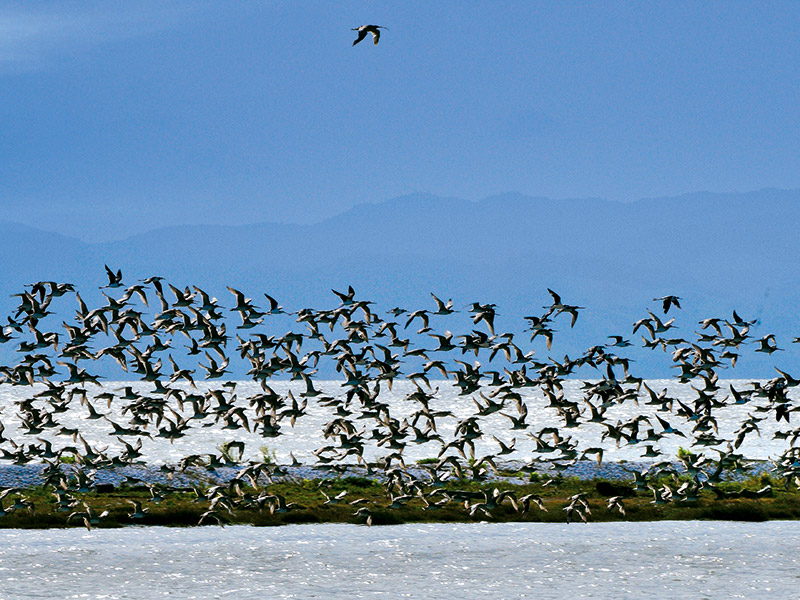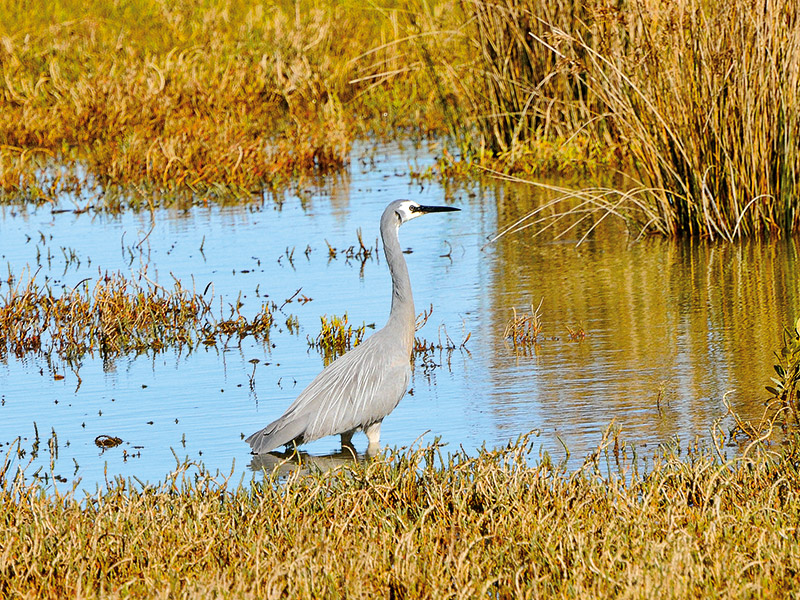The godwits are the stars of the migratory birds, and each year, in godwit places, birders gather to farewell them in March and welcome them home in October. Up to 100,000 godwits make the journey to and from Alaska where they nest.
When Sam and I visit Miranda in October there are around 4000 in the area roosting on shell banks at high tide. They have been arriving home for a month or so, in small groups, hungry, skinny and exhausted. When they first arrive, most can't fold their wings; they have been outstretched, flying, for so long.
Though godwits are the stars – their large numbers make them most visible – there are plenty of other global flyers arriving back for the summer. There are about 1000 red knots, smaller than the godwits, roosting with them and feeding in the mudflats. They too have come from Alaska, arriving later because they stop twice on the way to rest, once in China and once in Australia.
But the real migratory stunt-birds are the tiny red-necked stints, scarcely the size of a sparrow, which fly thousands of kilometres in one long haul. How they manage to do it is still a mystery as they are too little to have much body fat and too tiny to carry tracking devices.
The Firth of Thames, with its 8500 hectares of wide intertidal flats between Miranda and Thames, supports up to 40,000 birds. Sixty different species have been recorded, 24 of them wading birds, and many of these migratory.
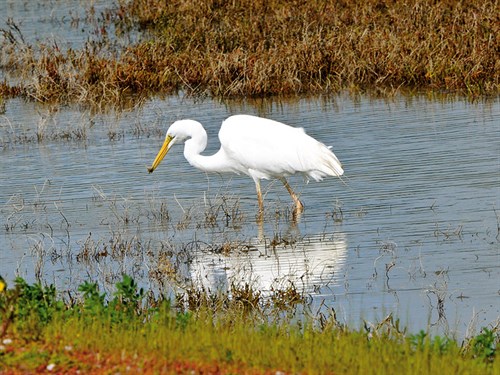
Pukorokoro Miranda Shorebird Centre
We visit the hide belonging to the Pukorokoro Miranda Shorebird Centre numerous times, at different tides, to see which feathered flying heroes are hanging out on the mudflats and shell banks.
There are 20 species listed on the board at present and we see most of them. I am happy to see a kotuku, a white heron, visiting from the South Island's west coast, as it fishes in a pond near the hide.
The bird that the real birders are excited about is an Eastern Curlew – it's migratory, and relatively common in Australia, but only about 10 spend their summers in New Zealand and one of them is on the shell bank at high tide, resting. The eastern curlew is about as big a pukeko – with a long (20-centimetre), curved beak.
Not much further down the road, a macrocarpa tree is home to 40 spoonbills and a lake is busy with black swans – some trailing fluffy goslings – and has flock of white cattle-egrets fossicking on its swampy edge.
This truly is a fabulously fecund area for birds but there are plenty of other activities to keep us busy between bouts of bird watching.
More information
Where? It's 50 kilometres from Clevedon to Miranda but it's such an interesting coast that one can easily spend two days in the area.
What? Visit the Pukorokoro Miranda Shorebird Centre, 283 East Coast Road. It's an interesting two-kilometre walk to the hide. Best bird viewing is two hours before and after high tide.
To read more, including highlights from Liz Light’s drive from Clevedon to Waitakaruru, don’t miss issue 125 of Motorhomes Caravans & Destinations. Subscribe here.

